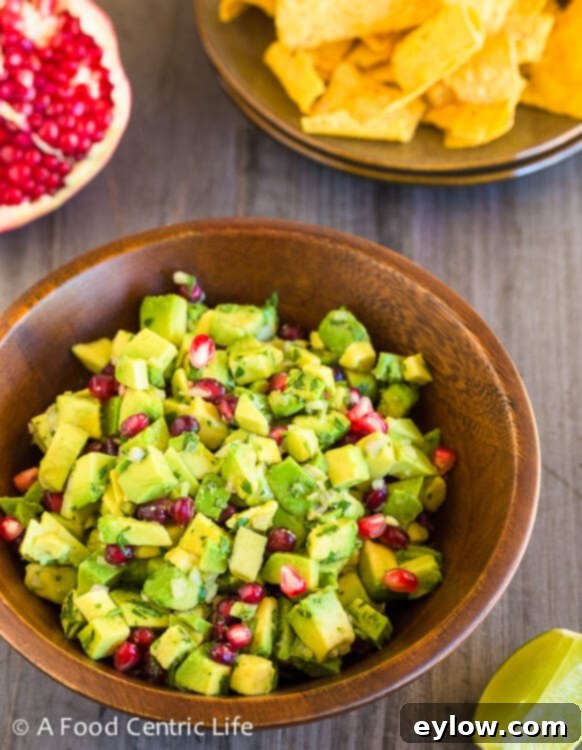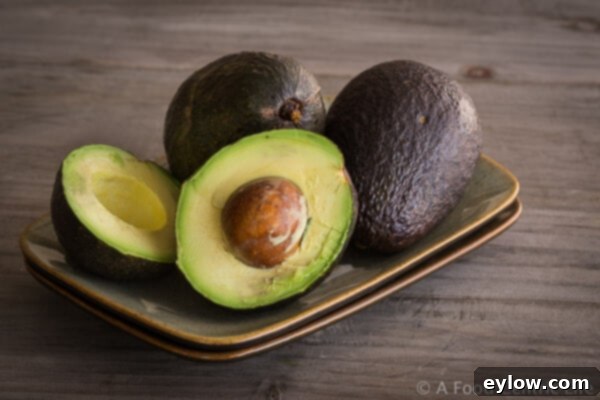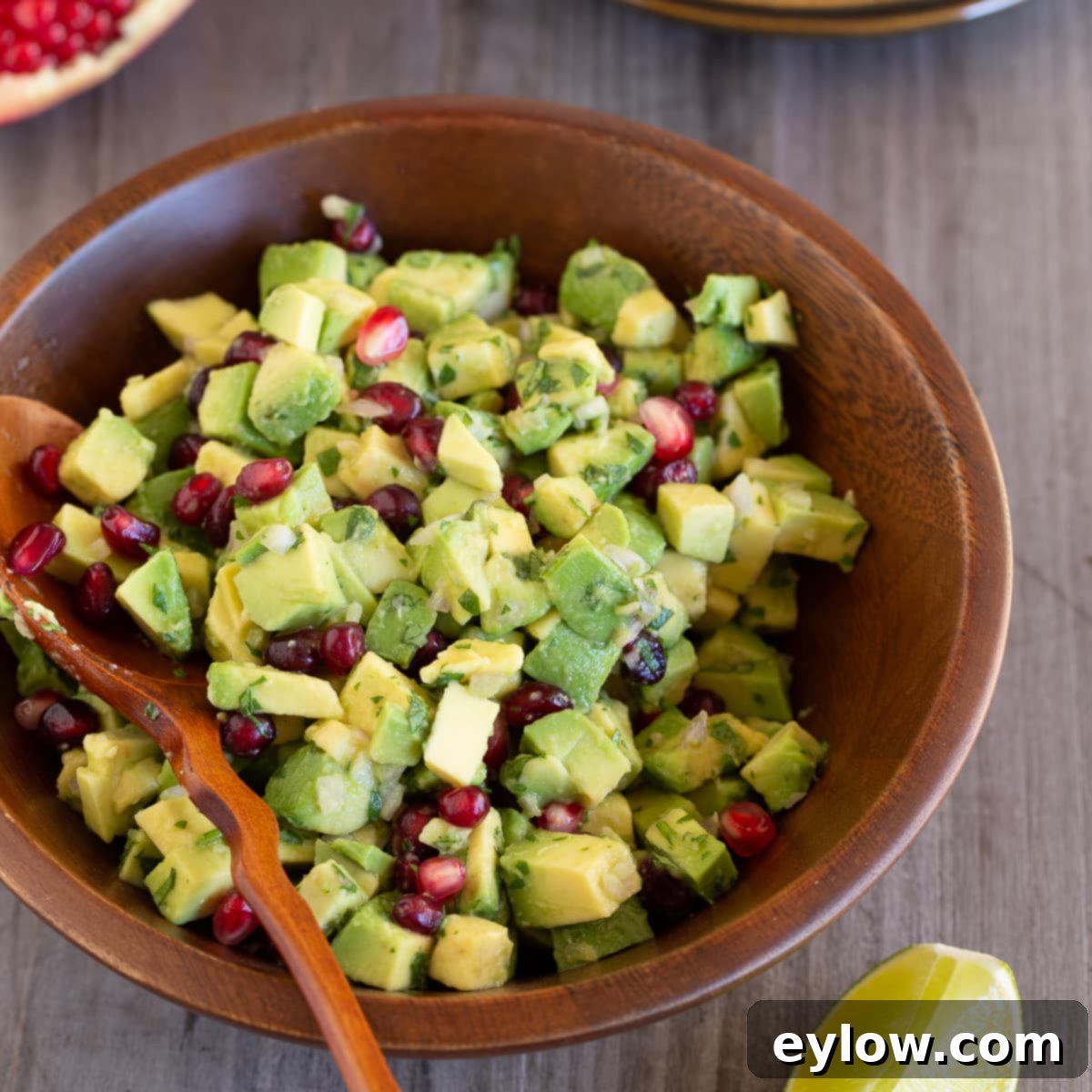Pomegranate Guacamole Recipe: A Vibrant, Healthy, and Delicious Avocado Dip
Prepare to tantalize your taste buds with a guacamole experience unlike any other. This extraordinary pomegranate guacamole, bursting with the fresh zest of lime, the aromatic punch of cilantro, and the subtle sweetness of shallots, is not just a treat for your palate but also a feast for your eyes. Its stunning colors and dynamic flavors make it a truly unique and healthy addition to any meal or gathering. While pomegranates traditionally signal the arrival of fall, their arils are increasingly available year-round, allowing you to enjoy this vibrant dip whenever the craving strikes. If you’re a devoted fan of classic guacamole, this beautiful and unexpected twist with tart-sweet pomegranate seeds is an absolute must-try that promises to elevate your snacking game.

One of life’s undeniable pleasures for many is the irresistible combination of creamy guacamole and crunchy tortilla chips. And yes, I’m guilty as charged – it’s a weakness I happily confess. The good news is, aside from the chips, guacamole itself is remarkably healthy, packed with beneficial fats and nutrients. Just last night, a sudden wave of hunger struck before dinner, and a quick glance into the fridge revealed a bowl of this magnificent pomegranate guacamole. Paired with some tortilla chips, half the bowl disappeared in what felt like mere minutes. It truly is difficult to stop once you start! My husband even had to intervene, jokingly suggesting we “put it away” to save some for later. The rich, buttery smoothness of perfectly ripe avocados creates an incredible contrast with the bright, juicy bursts of tart-sweet pomegranate seeds. Beyond the incredible flavor, the visual appeal of the creamy green punctuated by ruby red jewels is simply captivating, making this dip a showstopper at any table.
Essential Ingredients for Pomegranate Guacamole
Crafting this delightful dip requires just a few fresh ingredients that work in harmony to create a symphony of flavors and textures. Each component plays a crucial role in balancing the richness of the avocado with the tang of the pomegranate.
- 2 ripe avocados: The foundation of any great guacamole. Look for Hass avocados that yield gently to pressure.
- ½ cup pomegranate seeds (arils): These bright, juicy gems provide a burst of sweet-tart flavor and a delightful crunch.
- 1-2 tablespoons fresh chopped cilantro leaves: Adds a fresh, herbaceous note that brightens the entire dip. Adjust to your preference.
- 2 teaspoons finely chopped shallot or onion: Offers a delicate, savory aromatic base. Shallots provide a milder flavor than red onion, so choose based on desired intensity.
- 1-2 tablespoons fresh lime juice: Essential for brightness, acidity, and helping to prevent the avocado from browning. Freshly squeezed is always best.
- Salt and pepper to taste: Crucial for enhancing and balancing all the flavors. Start with a pinch and adjust as needed.
Selecting the Perfect Avocados
The success of your guacamole heavily relies on the quality and ripeness of your avocados. When navigating the produce aisle, focus on selecting avocados that offer a slight, gentle yield when you apply soft pressure with your thumb. They shouldn’t feel rock-hard, indicating they’re underripe, nor should they be mushy, which suggests they’re overripe. A perfectly ripe avocado will also peel with remarkable ease, separating cleanly from the skin and around the pit. Avoid any avocados with large soft spots or discolored patches, as these can indicate bruising or spoilage. If you plan to make guacamole in a day or two, it’s often best to buy avocados that are slightly firm and allow them to ripen at room temperature. To speed up the ripening process, place them in a paper bag with a banana or apple; the ethylene gas emitted by these fruits will accelerate ripening.
Mastering Avocado Preparation: A Step-by-Step Guide
For those who grew up enjoying avocados, preparing them might seem second nature. However, if you’re new to the world of avocado preparation or often find yourself struggling, here’s a simple, safe, and effective method to open and pit an avocado like a pro. Start by placing a sharp, heavy chef’s knife into the side of the avocado at its midpoint, from top to bottom, until the blade makes contact with the large seed inside. Carefully rotate the blade around the entire circumference of the avocado, creating a clean cut. Once you’ve circled the entire fruit, hold each half of the avocado in your hands and gently twist them in opposite directions. The avocado should cleanly separate into two halves, with one half containing the pit.
To remove the pit safely, place the avocado half with the seed facing upwards on your cutting board. Carefully but firmly strike the edge of your knife blade into the pit. With the blade securely embedded, twist the knife gently. The pit should dislodge easily from the flesh. To safely remove the pit from your knife, use a paper towel to grip it firmly and pull it off the blade, avoiding direct contact with your hand. Once the pit is removed, you can either scoop out the flesh with a spoon, or, for neatly diced avocado, gently peel back the skin from each half and then dice the firm flesh on your cutting board. This method ensures maximum flesh yield and consistent pieces for your guacamole.

Effortlessly Opening a Pomegranate
With its strikingly beautiful deep red to pinkish leathery skin, the apple-shaped pomegranate can appear quite daunting to open at first glance. However, it’s far less complicated than it seems, especially when you employ the simple and mess-free underwater method. Begin by trimming a small section off both the top and bottom ends of the pomegranate. Next, using a small paring knife, gently score the vertical ridges on the outside of the fruit, making shallow cuts that only penetrate the skin, not the arils inside. Now, place the scored pomegranate into a large bowl filled with water. While submerged, gently break the pomegranate open along your score marks. This ingenious method keeps the vibrant red juice from staining your kitchen surfaces or clothing.
Once opened under water, you can then easily loosen the sections and separate the ruby-red seeds (known as arils) from the white membrane using your fingers. The membrane pieces will float to the surface, making them easy to discard, while the heavy arils will sink to the bottom of the bowl. Drain off the water, and you’ll be left with a bounty of perfectly clean, ruby-translucent pomegranate seeds, ready to be enjoyed. A word of caution: attempting this process outside of water, especially while wearing light-colored clothing, might result in a charming (or not-so-charming) pink polka-dotted top. The underwater method is truly the best way to enjoy this fruit without the messy aftermath!
The Convenient Pomegranate Shortcut: Pros and Cons
For those times when convenience is key, or when fresh pomegranates are not in season, the easiest way to incorporate pomegranate seeds (or arils) into your recipes is to purchase them pre-packaged. Many produce departments now offer ready-to-use pomegranate arils in the refrigerated section, providing a handy shortcut that saves you the time and effort of deseeding the fruit yourself. This can be a real time-saver, especially for last-minute meal prep or entertaining.
However, while convenient, there are a couple of considerations when opting for packaged arils. Sometimes, these pre-separated seeds may not be quite as fresh or plump as those you would extract from a whole fruit. Their texture might be slightly softer, and their flavor a little less vibrant. Additionally, I’ve found that packaged pomegranate arils tend to spoil more quickly than a whole pomegranate stored in the refrigerator. If you choose this shortcut, be sure to check the “best by” date carefully and plan to use them soon after purchase to ensure you’re getting the freshest possible taste and texture for your guacamole.

Simple Steps to Your Perfect Pomegranate Guacamole
Creating this delightful dip is surprisingly straightforward, blending the creamy goodness of avocado with the vibrant burst of pomegranate. Follow these easy steps for a delicious result:
- Prepare the Avocados: Open your ripe avocados, carefully remove the seeds, peel away the skin, and then dice the creamy flesh. You have a couple of options here:
- Method 1 (In-Shell Dicing): Draw a grid pattern directly into each avocado half with a small knife, being careful not to cut through the skin. Then, use a spoon to scoop out the perfectly diced avocado flesh.
- Method 2 (On-Board Dicing): Alternatively, you can completely skin the avocado halves and then dice the flesh on a cutting board to your desired chunkiness.
- Build Your Guacamole Base: Once your avocados are diced, place them in a medium-sized bowl. Now, it’s time to create your guacamole, choosing between a creamy or chunky texture (see note below for more details).
- Add the fresh lime juice, finely chopped shallot or onion, and season generously with salt and pepper to taste. Gently mix these ingredients together with a fork or spoon, being careful not to overmash if you prefer a chunky texture.
- Prepare the Pomegranates: Either follow the instructions above to open and deseed a fresh pomegranate, or simply open your package of ready-to-eat pomegranate arils.
- Combine and Enjoy: Add both the prepared avocado mixture and the vibrant pomegranate seeds to a single bowl. Gently stir everything together, allowing the flavors and colors to meld beautifully. For an extra touch of freshness and visual appeal, sprinkle with additional fresh cilantro for garnish, if desired. Serve immediately and savor every bite!
Achieving Your Desired Guacamole Texture: Creamy vs. Chunky
The texture of your guacamole is a matter of personal preference, and this recipe is wonderfully versatile, allowing you to achieve either a lusciously creamy or a delightfully chunky consistency. For the photo accompanying this recipe, I chose to leave the avocados diced, resulting in a distinctly chunky guacamole that highlights the individual textures of its ingredients. This approach allows you to experience the firm bite of the avocado alongside the bursts of pomegranate. If you, however, prefer a smoother, more uniform guacamole, you can easily achieve this. Before adding the pomegranate seeds, lime juice, shallot, and seasoning, simply mash the diced avocado with a fork until it reaches your desired creaminess. For a truly authentic and deeply satisfying creamy texture, consider using a traditional mortar and pestle (or its Mexican counterpart, a molcajete). This ancient tool not only mashes the avocado perfectly but also helps to release the essential oils from the cilantro and shallots, infusing your guacamole with an even richer flavor. Once you’ve achieved your preferred avocado base, then gently fold in the remaining ingredients.
Creative Serving Suggestions for Pomegranate Guacamole
This vibrant pomegranate guacamole is incredibly versatile and can be enjoyed in a multitude of ways, beyond just the traditional chip-and-dip. Of course, serving it with your favorite crispy chips is always a winner. Opt for classic corn tortilla chips, or for a grain-free alternative, choose cassava chips. But why stop there? For a fantastic low-carb and refreshing option, try thinly slicing a cucumber on an angle to create fresh, crisp cucumber “chips” that are perfect for scooping. You can also pair this colorful dip with an assortment of raw veggies like bell pepper strips, carrot sticks, celery, or cherry tomatoes for a healthy and satisfying snack. For an elegant appetizer, dollop small portions of the guacamole into individual lettuce cups, creating a bite-sized, flavorful treat. The next time you’re planning a game day spread, hosting a casual get-together, or simply need a refreshing afternoon snack, remember this fall-inspired avocado pomegranate guacamole. Its unique flavor profile and stunning appearance are sure to impress!
The Nutritional Powerhouse: Why This Guacamole is Good for You
Beyond its incredible taste, this pomegranate guacamole is a true powerhouse of nutrition, thanks to its star ingredients: avocados and pomegranates. Avocados are renowned for their healthy monounsaturated fats, particularly oleic acid, which is known to support heart health and reduce inflammation. They are also an excellent source of dietary fiber, promoting digestive health and helping you feel full and satisfied. Furthermore, avocados are rich in essential vitamins and minerals, including Vitamin K, Vitamin C, Vitamin B6, Vitamin E, folate, and potassium—a mineral vital for blood pressure regulation. Pomegranates, on the other hand, are celebrated for their high antioxidant content, specifically punicalagins, which are powerful compounds that can protect cells from damage and offer anti-inflammatory benefits. They also provide a good dose of Vitamin C, Vitamin K, and fiber. Combined, these two superfoods create a dip that not only tastes amazing but also contributes significantly to your overall well-being. The addition of fresh lime juice adds even more Vitamin C, while cilantro and shallots provide additional micronutrients and digestive benefits.
Expert Tips for the Best Guacamole
To ensure your pomegranate guacamole is always at its absolute best, consider these additional tips. Firstly, always use fresh lime juice; bottled juice simply doesn’t compare in terms of flavor and acidity, which is crucial for brightening the dip and preventing browning. Secondly, taste and adjust seasoning throughout the process. Avocados vary in flavor, and you might need more or less salt and pepper depending on their natural sweetness and creaminess. Don’t be afraid to add a little extra lime juice if you feel the flavors aren’t quite popping. Lastly, for optimum freshness, make your guacamole as close to serving time as possible. While lime juice helps prevent browning, freshly made guacamole always tastes best.
Storing Leftover Pomegranate Guacamole
If you happen to have any leftover pomegranate guacamole (a rare occurrence!), proper storage is key to maintaining its vibrant green color and fresh taste. The primary enemy of guacamole is air, which causes oxidation and browning. To minimize air exposure, transfer the guacamole to an airtight container. Press a piece of plastic wrap directly onto the surface of the guacamole, ensuring there are no air bubbles trapped between the wrap and the dip. You can also add a thin layer of water or lime juice over the plastic wrap before sealing the container. Store in the refrigerator for up to 1-2 days. When you’re ready to enjoy it again, simply pour off any excess liquid and gently stir. While it might not be as perfectly fresh as when first made, these methods will keep it palatable and green for a little longer.
Explore More Delicious Recipes
If you’ve fallen in love with the bright flavors of pomegranate in this guacamole, you’ll be thrilled to discover other ways to incorporate this versatile fruit into your cooking. For another truly delicious recipe using pomegranate seeds, be sure to try this pomegranate spinach salad – it’s a refreshing and healthy choice that pairs perfectly with many meals. And if you’re looking for even more inspiration, there are countless ideas on what to do with those jewel-like pomegranate seeds, from savory dishes to sweet desserts, making them a fantastic ingredient to keep on hand!
📖 Recipe

Pomegranate Avocado Guacamole
Sally Cameron
Pin Recipe
Ingredients
- 2 ripe avocados
- ½ cup pomegranate seeds arils
- 1-2 tablespoons fresh chopped cilantro leaves
- 2 teaspoons finely chopped shallot or onion
- 1-2 tablespoons fresh lime juice
- Salt and pepper to taste
Instructions
-
Slice the avocados lengthwise, remove the seed, peel off the skin, and then dice the avocado flesh. Place the diced avocado into a medium-sized mixing bowl. Add the pomegranate seeds, fresh cilantro, finely chopped shallot or onion, fresh lime juice, and season with salt and pepper. Gently stir all the ingredients together until just combined. If you prefer a creamier guacamole, add the diced avocado pieces to a bowl or a mortar and pestle and mash the avocado to your desired consistency before incorporating the remaining ingredients.
